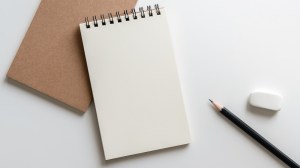From Block Printing to Etching: Exploring the Fundamentals of Printmaking
Printmaking is a fascinating art form that has been around for centuries. It involves creating multiple copies of an image or design using various techniques and materials. From the ancient method of block printing to the intricate process of etching, printmaking offers artists a unique way to express their creativity. In this article, we will delve into the basics of printmaking, its history, and some popular techniques used by artists today.
I. The History of Printmaking
Printmaking dates back to ancient times when it was primarily used for reproducing religious texts and images. The earliest known form of printmaking is block printing, which originated in China around 200 AD. This technique involved carving an image onto a wooden block, applying ink to the surface, and then transferring it onto paper or fabric.

Over time, printmaking spread to other parts of Asia and Europe. In Europe, woodcuts became popular during the Middle Ages for printing illustrations in books. With advancements in technology came new techniques such as engraving and etching, which allowed for more intricate details in prints.
II. Basic Techniques in Printmaking
Block Printing: Block printing involves carving an image onto a block made from wood or linoleum. The raised areas are then inked and pressed onto paper or fabric to create a print. This technique is relatively simple and accessible for beginners.
Intaglio: Intaglio refers to any printmaking technique where the image is incised into a surface such as metal or plastic. Common intaglio techniques include engraving, etching, drypoint, and aquatint. These methods require specialized tools and skills but allow for fine details and tonal variations in prints.
Lithography: Lithography is a planographic method that uses oil-based ink applied to a flat surface called a lithographic stone or metal plate. The image is created using a greasy medium, which repels water, allowing the ink to adhere only to the desired areas. This technique is known for its versatility and ability to produce rich and vibrant prints.
III. Printmaking Today
In contemporary art, printmaking continues to thrive as artists explore new possibilities and push the boundaries of traditional techniques. Many artists combine digital technology with traditional printmaking methods, creating hybrid works that merge the physicality of printmaking with the precision of digital tools.
Printmaking also offers unique opportunities for collaboration and community engagement. Print studios and workshops provide spaces for artists to share equipment, knowledge, and ideas. Print exchanges and exhibitions allow artists to showcase their work and connect with other printmakers from around the world.
IV. Why Learn Printmaking?
Learning the basics of printmaking can be a rewarding experience for both established artists and beginners alike. It offers a range of techniques that allow for experimentation and exploration of different artistic styles. The process of creating prints can also be meditative and therapeutic, providing a sense of satisfaction from seeing multiple copies of your artwork come to life.
Additionally, printmaking provides a way to produce affordable editions of artwork, making it more accessible to a wider audience. Prints can be sold or traded, enabling artists to reach collectors who may not have access to original pieces.
In conclusion, understanding the basics of printmaking opens up a world of possibilities for artists seeking new ways to express their creativity. Whether you are drawn to the simplicity of block printing or intrigued by the intricate details achievable through etching, printmaking offers endless opportunities for artistic exploration. So grab your tools and start experimenting – you never know what masterpieces you might create.
This text was generated using a large language model, and select text has been reviewed and moderated for purposes such as readability.


